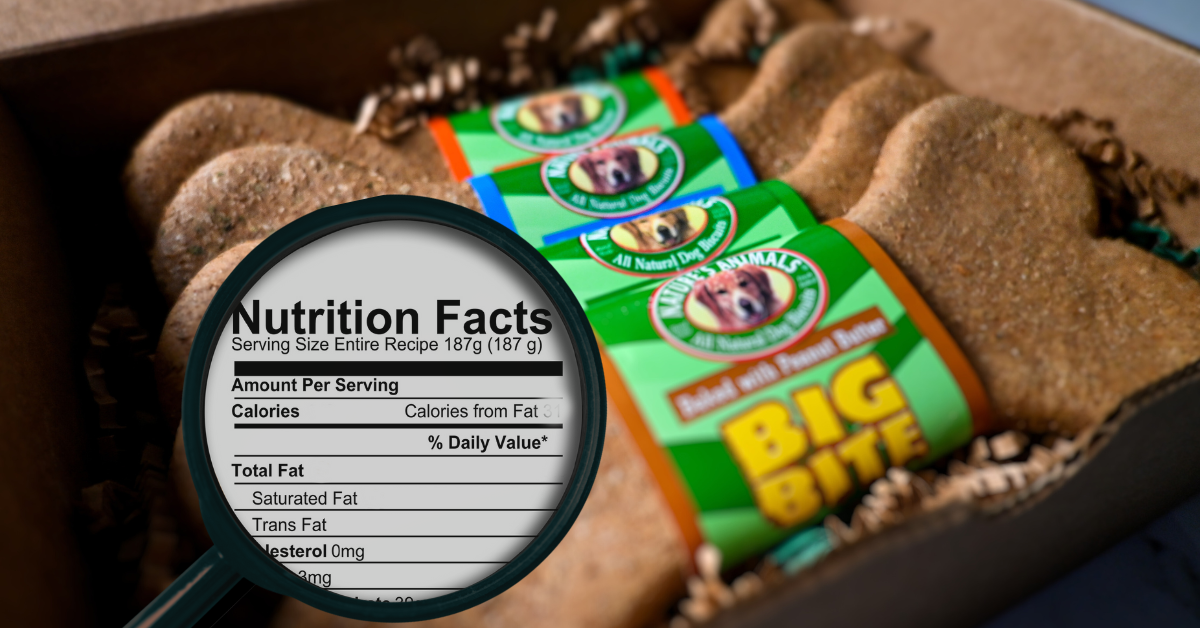
Choosing the Right Dog Treats: Your Ultimate Guide to Decoding Labels

With so many choices and labels boasting about being "healthy" and "natural," how do you know which treats are genuinely good for your four-legged companion? Sometimes it’s really hard to tell.
In this ultimate guide to decoding dog treat labels, we'll equip you with the knowledge and understanding to navigate the world of dog treats with confidence. You'll learn how to decode labels, demystify ingredient lists, and even uncover hidden dangers that could be lurking in those seemingly innocent treats.So, if you're ready to arm yourself with the knowledge to make the best choices for your dog's health and well-being, dive into this ultimate guide to decoding labels!
Understanding Dog Treat Labels
To truly make the best choices for your canine companion, it is essential to have a firm grasp on how to decipher dog treat labels. Just like with human food, the labels on dog treat packaging can provide invaluable information about the product's composition, nutritional value, and overall quality.
The ingredients are typically printed on the back or side of the packaging and are listed in order of quantity within the treat, from the highest to the lowest amount.
When reading ingredient lists, look for treats that have whole, recognizable ingredients. Seek out treats that contain specific protein sources like chicken, beef, or fish. Avoid those that have vague or generic descriptions, such as "meat by-products" or "animal digest." These terms can indicate low-quality ingredients or potentially harmful additives. Additionally, be cautious of treats that contain artificial flavors, colors, or preservatives, as these may not provide any nutritional benefit to your dog.
Analyzing ingredient lists and seeking out high-quality, recognizable ingredients will help ensure that you are selecting treats that contribute to your dog's overall health and happiness.
Decoding Dog Treat Ingredient Lists
When it comes to choosing the right dog treats, decoding ingredients that aren’t clear or familiar to you is an essential step to make sure you're providing your furry friend with the best options.
Just like with our own food, it's best to avoid artificial additives and fillers. Instead, opt for treats that are made with real meat, fruits, and vegetables. These natural ingredients not only provide essential nutrients but also add flavor and variety to your dog's snack time.
Pay Attention to Two Key Phrases: By-Products and “Meal”
By-products are non-rendered, clean parts of a mammal other than the meat and are often not used for human consumption. This may mean nutrient-dense organs such as the liver or heart but also lower-quality ingredients like fatty tissue.
Meat Meals are the rendered products from mammal tissue, excluding bones, blood, hair, horns, hide trimmings, manure, stomach and rumen contents, except in such amounts as may occur unavoidably in processing practices. The tissue is cooked to remove water and then baked into a concentrated powder.

By understanding dog treat labels and analyzing ingredient lists, you can make informed decisions about the snacks you provide for your furry friend. This will help ensure that the treats you choose contribute to their overall health and happiness and give them everything they need to feel satisfied and nourished.
Avoiding Hidden Dangers in Dog Treats
While it's crucial to analyze ingredient lists to ensure the treats you choose are nutritious and safe for your furry friend, there are additional factors to consider to protect your pup from the inside out. By being aware of hidden dangers, you can confidently provide your dog with treats that not only taste great but are also free from potential harm.
One of the hidden dangers to be mindful of is artificial additives and preservatives. These can be found in many commercial dog treats and may include artificial colors, flavors, and chemical preservatives.The Food and Drug Administration has approved the low-dose use of some chemicals, like BHA (butylated hydroxyanisole) and BHT (butylated hydroxytoluene), as treat preservatives. However, these chemicals are possible carcinogens, and are banned in California, Japan, Europe, Canada, Australia, and New Zealand.
Some dogs may have allergies or sensitivities to these artificial ingredients, leading to digestive issues or adverse reactions. Opting for treats that are free from artificial additives can help ensure that your dog's snack time remains a positive and healthy experience.

In addition to the ingredients we’ve mentioned, there are other dog treat additives that it’s best to avoid.
|
Familiarize yourself with these hidden dangers:
|
Additionally, be cautious of treats that are high in fat or sugar content. Just as with humans, excessive fat and sugar can lead to weight gain, obesity, and other major health issues. Treats that are marketed as "highly palatable" or "irresistible" may tempt you to indulge your furry friend, but it's important to check the label for overall nutritional balance as well as taste.
Opt for treats that are low in fat and sugar, or even explore healthier alternatives such as fruits or vegetables that are safe for dogs to consume. Your dog may just love crunching pieces of fresh, peeled carrot!
The best way to ensure your pet is consuming high-quality treats that are truly good for them is to choose all-natural, locally made, ethically-sourced dog treats.

Avoid artificial additives and preservatives, hidden allergens, and treats high in fat or sugar content to help ensure that the treats you choose contribute to your dog's overall health and well-being.
Choosing Dog Treats for Specific Dietary Needs
Just like humans, dogs can have allergies or sensitivities to certain ingredients, or they may require treats that cater to specific health conditions. When choosing food and treats, your furry friend may have specific dietary needs that need to be taken into consideration.
If your dog has known or apparent allergies or sensitivities to foods, consult with your veterinarian to determine which treats are safe for them. Some treats are formulated specifically for dogs with food allergies or sensitivities, while others cater to specific dietary needs. In some cases, your veterinarian may suggest grain-free or limited ingredient options.
If your dog does have allergies or sensitivities, it's important to read the labels thoroughly and stay away from treats that contain common allergens like wheat, corn, and soy – or other specific ingredients your veterinarian has suggested you avoid.
For dogs with health conditions like diabetes or pancreatitis, it's crucial to choose treats that are low in fat and sugar. Seek out treats that are low in fat and harbor only the highest-quality ingredients. If your dog is being tested or treated for any medical condition, ask your veterinarian if their usual diet should be changed or limited.
Of course, age and activity level also play a role in choosing treats. Puppies have different nutritional requirements than adult dogs, and senior dogs may benefit from treats that support joint health or dental care. Active or working dogs may benefit from treats that provide extra energy or support muscle recovery. Take your dog's individual needs and your veterinarian’s advice into account, and select treats that align with their activity and life stage.
Nature’s Animals Takes the Mystery Out of Healthy Ingredients
Decoding labels on dog treats is an essential skill for every dog owner who wants to prioritize their furry friend's health and well-being. At Nature’s Animals we make things simple by using limited ingredients of the best quality to create healthy, all-natural dog treats. Our treats are free of artificial preservatives, synthetic colors or flavors, and by-products, so you won’t be confronted with a long, confusing ingredient list.
Buy a pack of 10 for your pup here! If you still have questions about ingredients lists or Nature’s Animals treats, join our email list or drop us a line!









Leave a comment
This site is protected by hCaptcha and the hCaptcha Privacy Policy and Terms of Service apply.